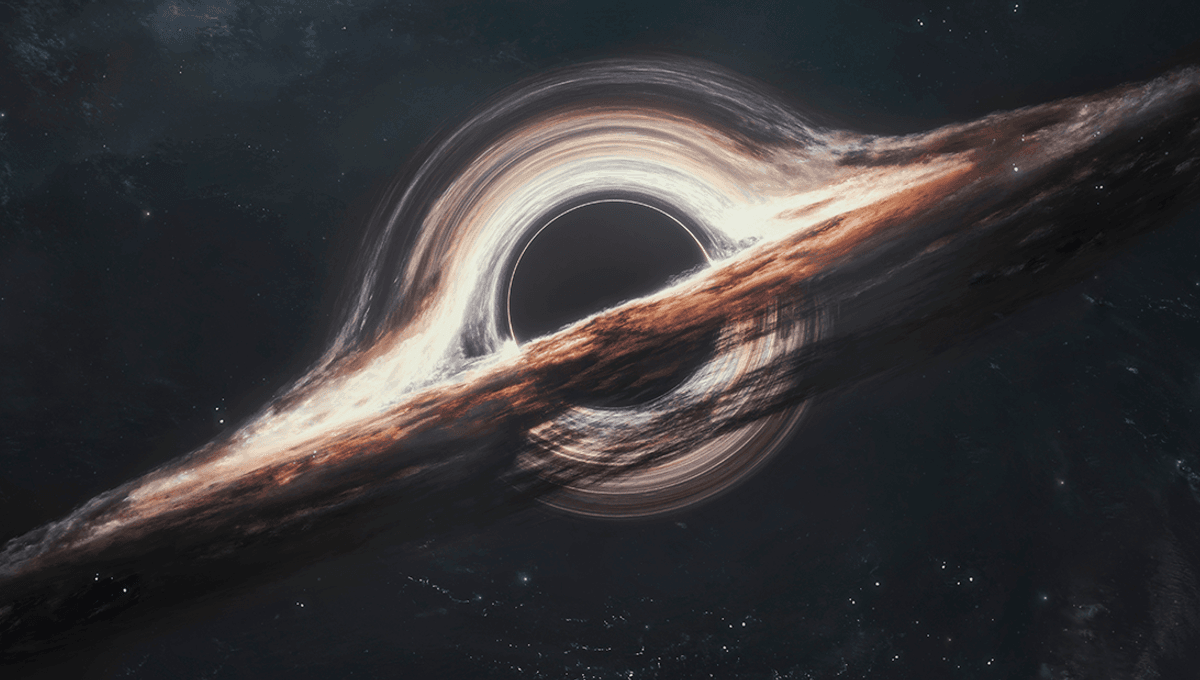
The JWST has looked further into the universe than we have ever seen before, discovering a galaxy as it appeared just 330 million years after the Big Bang.
Looking this far back into the universe has yielded a few surprises, including those eerily big black holes that keep appearing, confounding our theories about how black holes form. Supermassive black holes we see in the nearer (more recent) universe are, as the name would suggest, pretty big. Cosmologists would like to know how these supermassive black holes, which are found at the center of most (but not all) galaxies, came to be such a large size.
There have been a number of theories, including mergers of black holes, and that the black holes grew through feeding. These early black holes appear to be too large to be explained by these ideas, and much larger than cosmologists had been expecting in comparison to the galaxies surrounding them.
“Overall, we see that black holes in the young galaxies observed by JWST are about 10 to 100 times more massive than the scaling relation in the local universe predicts,” Xiaohui Fan, a professor at the University of Arizona and co-author of a study on these oversized black holes, said in a statement. “The ratio of stellar mass to black hole mass in early galaxies was much lower back then, more than a dozen billion years ago, compared to now. This result has important implications for the study of the first population of black holes.”
Another idea, which is perhaps becoming more likely to be true in light of recent observations, is “direct collapse” or “heavy seed” black holes. Usually, to get a stellar mass black hole (in the current age of the universe), a star undergoes collapse.
“A stellar-mass black hole forms when a star with more than 20 solar masses exhausts the nuclear fuel in its core and collapses under its own weight,” NASA explains. “The collapse triggers a supernova explosion that blows off the star’s outer layers. But if the crushed core contains more than about three times the Sun’s mass, no known force can stop its collapse to a black hole.”
With heavy seed black holes the idea is that supermassive black holes would have started out at around 10,000 to 100,000 solar masses, through the direct gravitational collapse of gigantic gas clouds, without an intermediate stellar phase. There are a few things that could make this scenario unlikely too. The gas cloud would need to collapse without fragmenting and forming clumps as it does so, though astronomers have suggested that this could be prevented if the cloud is heated by nearby young stars in pre-galactic gas disks, or if the gas cloud was moving at supersonic speeds in “flows” in the early universe, allowing them to grow for longer, until the gravity is sufficient to start the cloud’s collapse into a seed black hole.
One team has already claimed to have seen some evidence for a direct collapse hole in observations on galaxy UHZ1, showing that the black hole is too oversized for the galaxy surrounding it, and too early for the black hole to have formed by stellar collapse and mergers – but, it is still far too early to confirm direct collapse black holes. Hopefully further observations will help clear up the mystery of how our current supermassive black holes formed, and whether they formed from light or heavy seeds.
Source Link: Are Those Eerie Oversized Black Holes In The Early Universe The Result Of Direct Collapse?